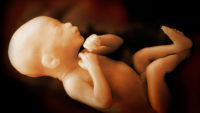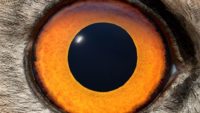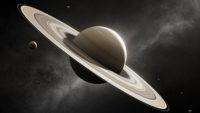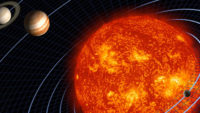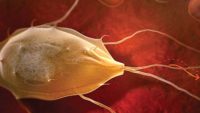An insurmountable impediment to evolution. …read more Source: creation.com
By Ken Ham You may have seen headlines recently with phrases like “lizard-men evolution,” “leftovers from our lizard evolution,” or even “human embryos go through lizard stage.” These headlines were reporting on a study that claims that human embryos (babies in the early stages of development) supposedly have muscles not found in adult humans, but are found in lizards. Therefore, these evolutionists believe this is a throwback to 250 million years ago when we shared a common ancestor with lizards. But what does a world-class anatomist who specialized in embryology have to say about this research? Well, he summed …read [More]
By Prof. Stuart Burgess Don’t look now, but you’re being watched by an amazing variety of magnificent eyes. …read more Source: AIG Daily
Big Bang scientists recently used a new method to estimate the universe’s age. This method yields an age estimate that could be over two billion years younger than their current age estimate of 13.8 billion years.1,2 However, this new method has large uncertainties, so not too much can be made of this result. It’s mainly of interest because it reminds us how Big Bang age estimates often contradict one another. … More… …read more Source: icr.org
By Harry F. Sanders, III Since plants are unable to simply get up and walk, or even shout when in danger, we often think of plants as passive. …read more Source: AIG Daily
Their survival is hard to explain, but after a little digging, answers start to emerge. …read more Source: creation.com
By Ken Ham In today’s world we often hear statements like “science disproves creation” or “science proves evolution.” …read more Source: AIG Daily
Do evolutionists really say that the bones, joints, muscles, nerves and eardrum really turn into the middle ear of mammals? Unheard of! …read more Source: creation.com
When and how did dogs diversify after Noah’s Flood? …read more Source: creation.com
By Troy Lacey Human vision is incredible. The human eye and brain are adept at recognizing objects, even when they are not fully visible or oriented at different angles. …read more Source: AIG Daily
By Ken Ham Naturalistic scientists disagree on the age of Saturn’s rings. NASA’s Cassini spacecraft had a planned crash into the planet in 2017. The data that it gave was interpreted as evidence that Saturn’s pristine rings formed just 200 million years ago in the evolutionary timescale of our solar system. But a new study disagrees. It states that “processes that preferentially eject dusty and organic material out of Saturn’s rings could make the rings look much younger than they actually are.” This study says the rings are 4.5 billion years old. So exactly how old are Saturn’s rings? …read [More]
By Ken Ham The topic of climate change is always in the headlines. But it’s been dominating the news lately because of the Climate Change Summit and the climate change protests from young people around the world. These young people are rallying to demand that governments take their future seriously and to enact radical policies to limit carbon emissions. Some (including teenagers) are even signing a pledge that they won’t have children until the government does something about climate change! Is this climate change hysteria justified? Since the 1960s, scientists and government leaders have been warning of catastrophic environmental failure, [More]
Powered by ocean wind shear, the dynamic soaring of the albatross enables it to fly for thousands of miles just above the sea surface without flapping its wings. …read more Source: creation.com
By Dr. Danny R. Faulkner A new study raises another problem that no one seems to be talking about. Where did this galaxy dust come from? …read more Source: AIG Daily
New human organs are rarely discovered, but that’s what several astute scientists recently accomplished at Sweden’s Karolinska Institutet’s Department of Medical Biochemistry and Biophysics.1 The organ is a loosely connected mesh of cells in the skin’s nervous system that are sensitive to painful conditions straining the skin. This research also demonstrates fundamental design principles of biological sensors.More… …read more Source: icr.org
A tiny caterpillar can make a meal out of an unsuspecting insect in the blink of an eye. …read more Source: creation.com
By Dr. Jean Lightner Want to race? It’s easy to see why white-tailed deer have become winners in the Americas. …read more Source: AIG Daily
Everything we see is mostly made up of empty space …read more Source: creation.com
Two recent reports undermine natural selection, but support design. The reports reinforce the reality that creatures are active, problem-solving beings that sense environmental changes and produce targeted adaptive responses. Another new insight is that an organism’s offspring could produce the same targeted response. However, the adaptive traits aren’t due to changes in DNA per se. Rather, the expression of the genes are modified dur… More… …read more Source: icr.org
By Dr. Danny R. Faulkner Evaluating 25 astronomical arguments for recent origin for the solar system found some to be wanting and others appear to be sound. …read more Source: AIG Daily
Each time a fossilized creature with legs is found mingled with fossil sea creatures, a new quandary for evolutionary history presents itself. When the same situation surfaces many times, that quandary multiplies. Discoveries like a new and relatively complete hadrosaur from Japan keep testing secular scientists’ skills to imagine ways whole dinosaurs could have fossilized. These findings also happen to make slick-fitting pieces of the Bibl… More… …read more Source: icr.org
No proof for evolution-Archaeotherium pre-Flood pig, and Onychonycteris turns out to be yet another species of bat. …read more Source: creation.com
By William Worraker The Genesis Flood produced drastic geological changes involving extremely energetic processes which also generated an enormous heat load. …read more Source: AIG Daily
By Ken Ham A rather lengthy article appeared recently in The Scientist regarding Neanderthal DNA and its appearance in our own genome. Contrary to what evolutionists expected, Neanderthals and what they call modern humans had children together. Since this was an unexpected (in their view) discovery, researchers have been digging to see what marks Neanderthals left in our DNA. And they’ve found that those marks may influence (in some people of certain descent) skin shade, immunity, susceptibility to depression, and even whether someone is a night owl or a morning person. What does this tell us from a creationist …read [More]
By Dr. Georgia Purdom What if we could design a super-small, versatile machine that could travel up blood vessels to deliver targeted medical aid? …read more Source: AIG Daily
What new functions do these supposed examples of ‘junk DNA’ have? …read more Source: creation.com
DNA reveals beluga-narwhal hybrid …read more Source: creation.com




















